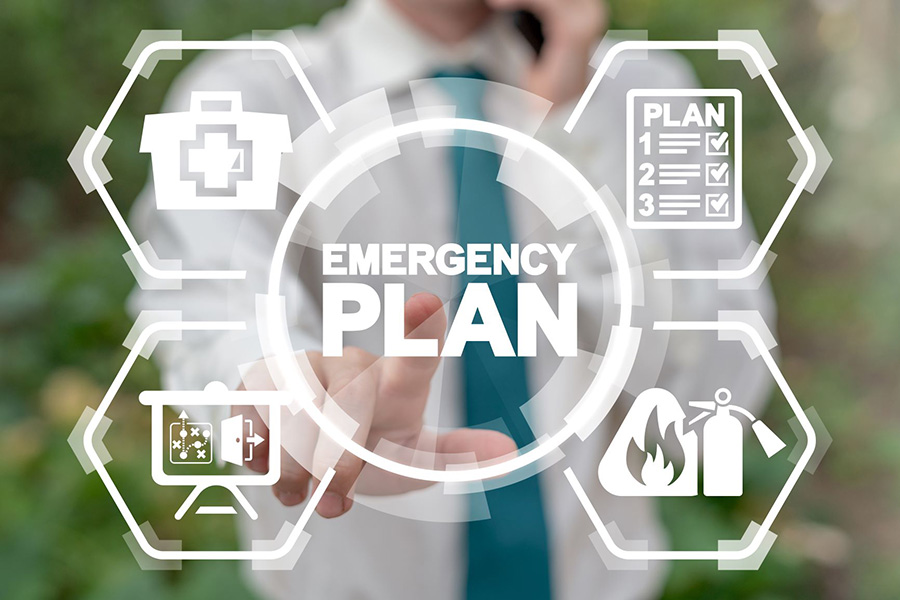
16 Nov TIPS FOR AN ADEQUATE EMERGENCY AND EVACUATION PLAN
The procedure and the evacuation means of an enclosure must be determined by the Self-Protection Plan. This document determines how people responsible for the execution of this plan should act when an emergency is detected.
Usually, this type of plan entails some responsibilities in response to some basic questions:
- What will be done?
- Who will do it?
- When will it be done?
- How and where will it be done?
This “how” defines where the self-protection plan must study the necessary means and their availability in case of emergency, determining the design of the systems. For example, the security technician notifies where the alarm takes place to the security manager, who confirms the alarm status and notifies the evacuation manager to confirm whether or not evacuation is necessary.

Emergency Classification
Emergencies can be classified depending on their potential danger:
- Simple emergency: it can be controlled and dominated in a simple and fast way by the personnel and protection means in the work center, department or sector.
- Partial emergency: requires the action of the special emergency teams of the sector in order to be controlled. Its effects are limited to one sector.
- General emergency: it requires the performance of all the equipment and means of protection of the work center and the help of external means of relief and rescue. It is extended to the entire work center.
Enclosure types
In enclosures with limited capacity (small offices or commercial premises) complex evacuation plans are not often required (there is usually a single evacuation message to indicate to personnel how to leave the enclosure).
It is also important to take into account that, in large areas, with a greater affluence, or where people are not trained (shopping centers, airports, logistic centers or buildings) the evacuation procedure must be carefully studied and analyzed. This is needed in order to be as efficient as possible in terms of evacuation capacity and to avoid causing greater inconvenience during the emergency process.
THE MESSAGE
Depending on the types of emergency and the typology of the enclosure, messages must be designed to be transmitted either automatically or by trained personnel. The following considerations should be taken into account:
Try to simplify the procedure with two messages, one alert message and one evacuation message, except for enclosures with architectural needs that require evacuation by phases (several messages depending on the affected area). Always try to avoid more than two messages per area to be evacuated.
In the case of agglomerations or critical installations, the message must be coded, a “cipher code” to prevent mass escape of people (for example, visitors or external clients). This code can be a message known only by internal employees (e.g. “Mr. Flan Asus is asked to come to information”) or a melody (e.g. a classical music song not usually played in the enclosure).
If a second language is required, it is better to use this second language at the end of the first message (the forcefulness of the message and the volume are key in order to recognize the state of emergency), i.e. multilingual message.
In high-risk situations that require immediate evacuation (for example, a fire at a chemical plant or a terrorist attack at an airport), a siren can be incorporated at the beginning of the message to warn all personnel (internal and external) of the importance of the situation. This will help to give a strong emphasis to the message,
Using a clear voice with adequate intonation that communicates the necessary strength can make a big difference in the effectiveness of the message and must take into account the circumstances of the place where it is broadcasted, such as the culture, the country, the use of the enclosure, etc.
Conclussions
Because of the reasons explained above, it is very important to establish an adequate emergency plan according to the conditions and architectural characteristics of the enclosure, its use, the personnel operating inside, etc.
The voice evacuation system, the design of the message, its intelligibility and reliability are an essential part of the evacuation process, and ensure that the actions taken are compliant with the initial premises of speed and efficiency: every second counts.



